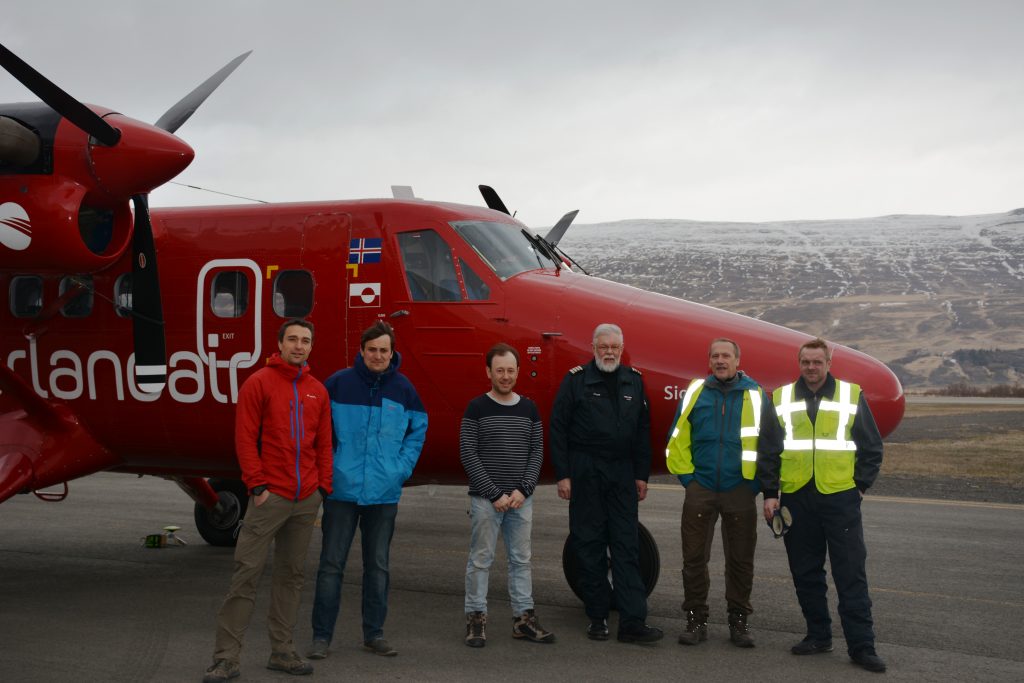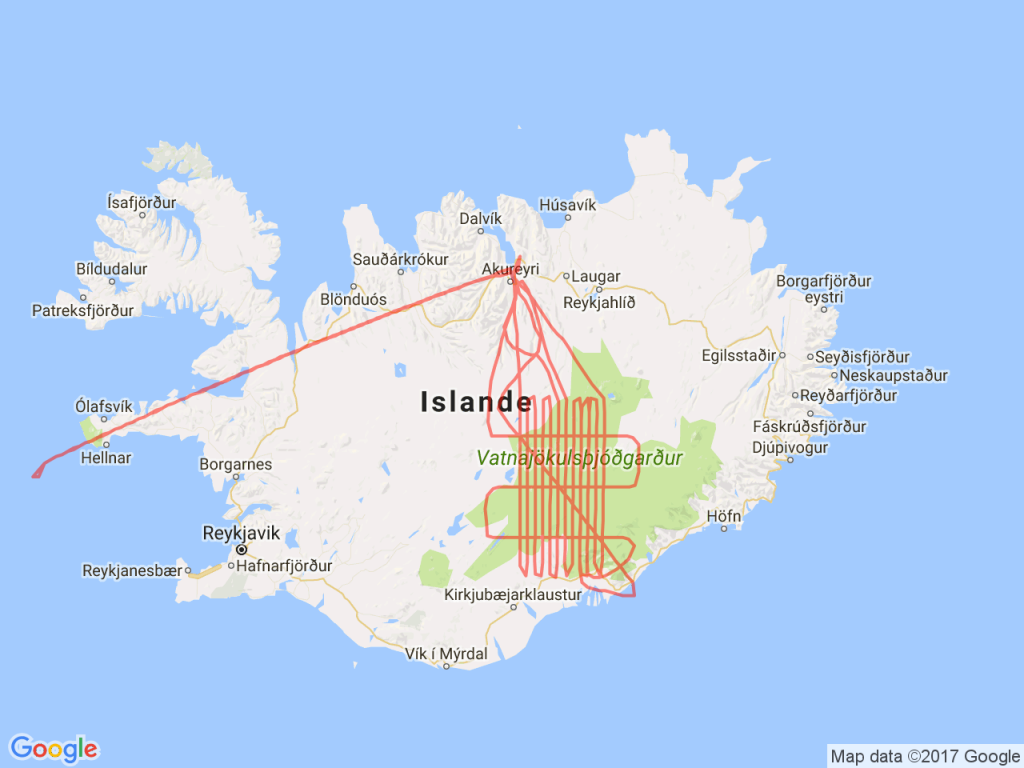The recent international field campaign that took place in the Arctic to validate measurements from ESA’s CryoSat ice mission and to test the potential of using a new way of measuring ice in the future has been a huge logistical effort. While ice has been the focus, the campaign also offers a great opportunity to take other measurements and make sure the campaign benefits science as much as possible.
So, the Technical University of Denmark (DTU) and the French national aerospace research centre ONERA are taking advantage of the campaign to test a new gravimeter instrument that measures gravity.

Gravimeter team. (ONERA)
As part of this effort, the team spent 25 and 26 April flying over Iceland’s Vatnajökull glacier, taking measurements all the way with the new gravimeter instrument.

Flight tracks over Vatnajökull in Iceland. (ONERA)
With the instrument now back at Onera’s lab in Palaiseau, France, the team are analysing the data they gathered during the campaign.
It has been shown that atomic quantum sensors are a newly emerging technology that can be used for measuring the Earth’s gravity field. While on-board classical gravimeters typically suffer from drift, Cold Atom Interferometers are highly accurate over the entire frequency range.
The results from this recent campaign will hopefully confirm that technology based on this new type of gravimeter, could be used to measure Earth’s gravity from space.
Post from Alexandre Bresson (ONERA)








Discussion: no comments